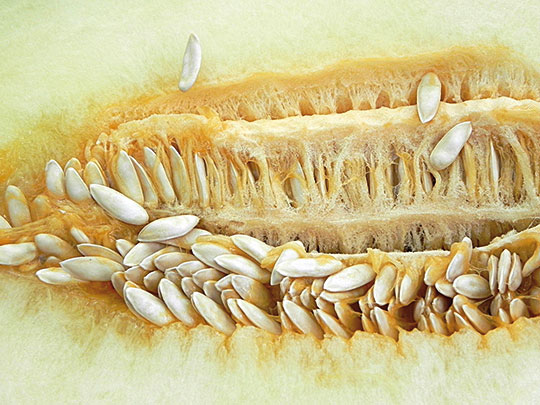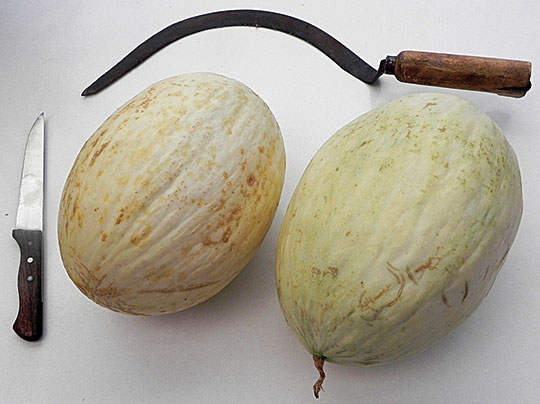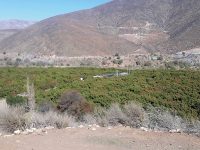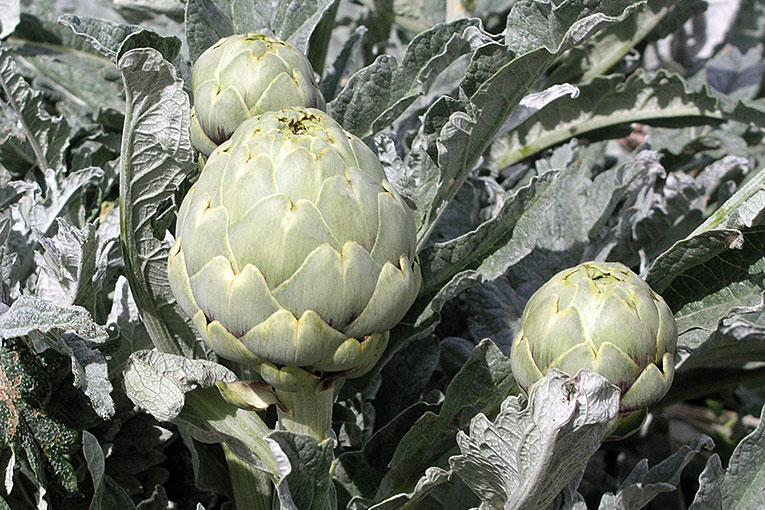
 |
|||
|
Especially during winter, the beauty of the artichoke plant, with great clear leaves, brightens and lightens up the garden. If we have enough surface, such a useful plant must be present. We will give it a very sunny and easily watered place and it will reward us with tender and tasty artichokes for many months. The artichoke plant is a multi-year plant that yields edible fruits in the winter and spring. The root resists many years in the soil, which is to say that it will be some time in the garden. The lower leaves, the first ones, are very large – around 20 or 30 inches long – between blue and light, ashy green; later the leaves from the stalks are smaller and simpler. The artichoke on the market is the flower, or rather the unripe inflorescence of the plant; as it belongs to the Compositae family, the floral piece has a calyx and a good handful of scales – fleshy at the base and sharp-pointed at the end – surrounding the inside flowers. When it seeds, it opens and the blue flowers can be seen. Introduced by the Arabs, this plant is a close relative of the thistle, but while we use its main rib, as we know, we eat the flower of the artichoke. Although there is a variety of artichoke in the counties of El Comtat and L’Alcoià called carxofa de l’olleta (artichoke of the little pot), which bears artichokes and main ribs. A hot and invigorating dish is cooked with them, as typical of the Moors and Christians Festival as music. Growing artichokes is not complicated. The ground should be thoroughly prepared and well-dug, and a good amount of manure should be provided. The plant is demanding with food and it likes manure, which will be used at the beginning of the cultivation, and if possible we will add more in the following years. The most skilled farmers make straight ridges like a thread to plant them. If the area is moist the ridges should be high, irrigated underneath the furrow. They stand the cold fairly well. If the winter is hard the plant can freeze, although it may sprout again in the spring from the foot of the trunk. They also need water, plenty of it at first, then less, so that it puts down roots well. When we can see the artichokes we will water them more frequently so that they will quickly grow and be tender. At the end of the harvest we will withdraw the irrigation to allow the plant to dry; approximately in the summer. When we have time we will cut the aerial part and leave the roots to bear the heat with the accumulated reserves. Here ends its cycle until it sprouts out again, then we will water it and work it again. The artichoke plant is multiplied normally with the stem or shoots chosen from the best plants. From them we can get green shoots in spring, or better, hard pieces of the stem when the bush dries in the summer, making sure that the cutting includes a thallus from the parent plant. A friend can give them to us, other times we will have to pay for them; in any case, we will ensure they are healthy and vigorous cuttings and we will reject those that have no buds or that are broken. |
«Aquesta planta és parenta propera del card, i mentre que aquest s’aprofita per la penca, la carxofa com sabem ho és per la flor» | ||
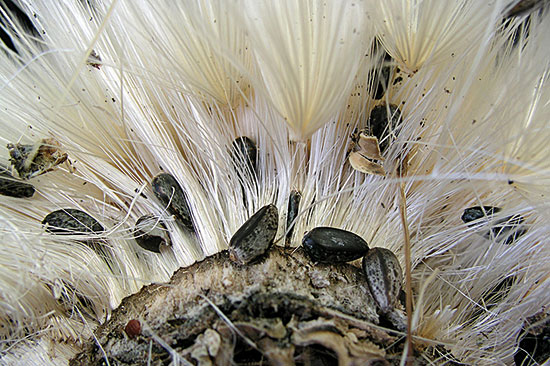 Josep Roselló Josep RosellóArtichoke seeds. |
|||
|
We can also sow the seed, but from sexual reproduction we will obtain uneven plants; on the other hand, plant cutting gives us clones, that is, plants that are identical to the parent plant. The cuttings are planted in the garden in July or August, either in a moist medium or it is immediately and abundantly watered, but you must always plant the bud above ground. The moon that is suitable for planting is the crescent moon, and the biodynamic agriculture farmers will still choose the flower day. When the plant stem sprouts, the plant must be weeded out and earthed up. However, be careful, they do not like being moved, the roots could break and the plant may die. It is a plant with a long life, so it suffers many health incidents. If there is too much moisture, fungi and rotten parts can appear. They are also visited by plant lice in the winter and the spring, and then by caterpillars. One called screwworm devours the plant from the inside and damages it a lot; there are also snails, which have a predilection for this plant and gnaw at it fiercely. But this should not worry us too much, since at any time we will take care of the plants with the suitable remedies. The harvest of the new plant is short the first year. It starts by Christmas time depending on the climate, continues during spring and ends just at the beginning of summer. In the second and third years the harvest is large, and later their production declines again. We will reap the artichokes when they have the right quality: not too tender or old. If the bracts (leaves) of the artichoke open and end in thorns, it means that the artichoke is overripe and cannot be eaten. They also open when it is hot, so we have to water them more and reap them when they are small, before they harden. Artichokes are very appreciated because they can be cooked in different ways, and are good for our liver. They can be eaten as appetisers – the Italian Cynar is made with them –, and they are cleansing and diuretic. They contain many vitamins and good minerals. Enjoying this delight on our table and garden is worth it. |
|||
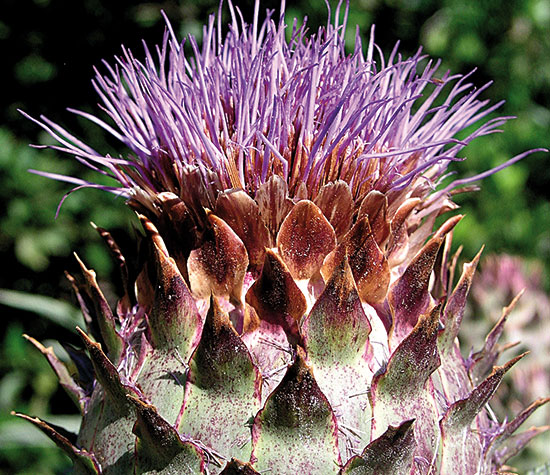 Josep Roselló Josep Roselló |
|||
|
|||
|
Josep Roselló i Oltra. Agricultural technician. Carcaixent Agricultural Station. |
|||

